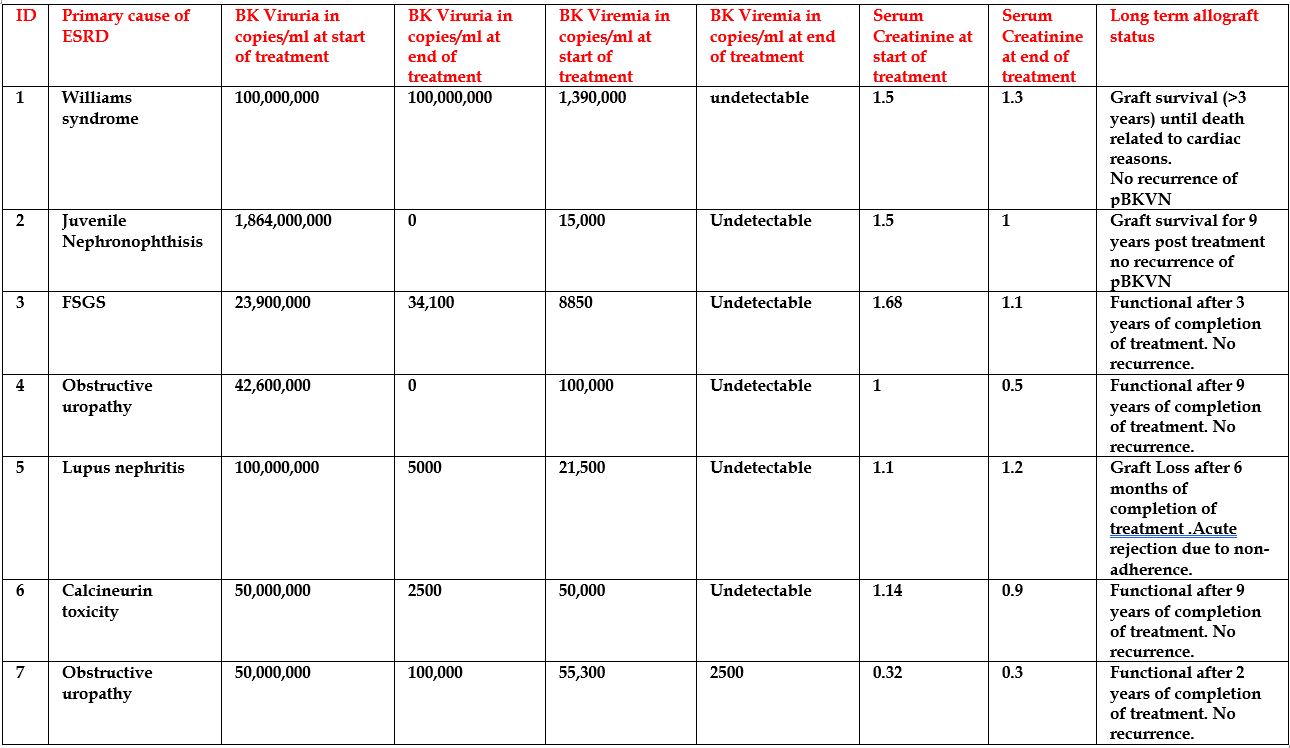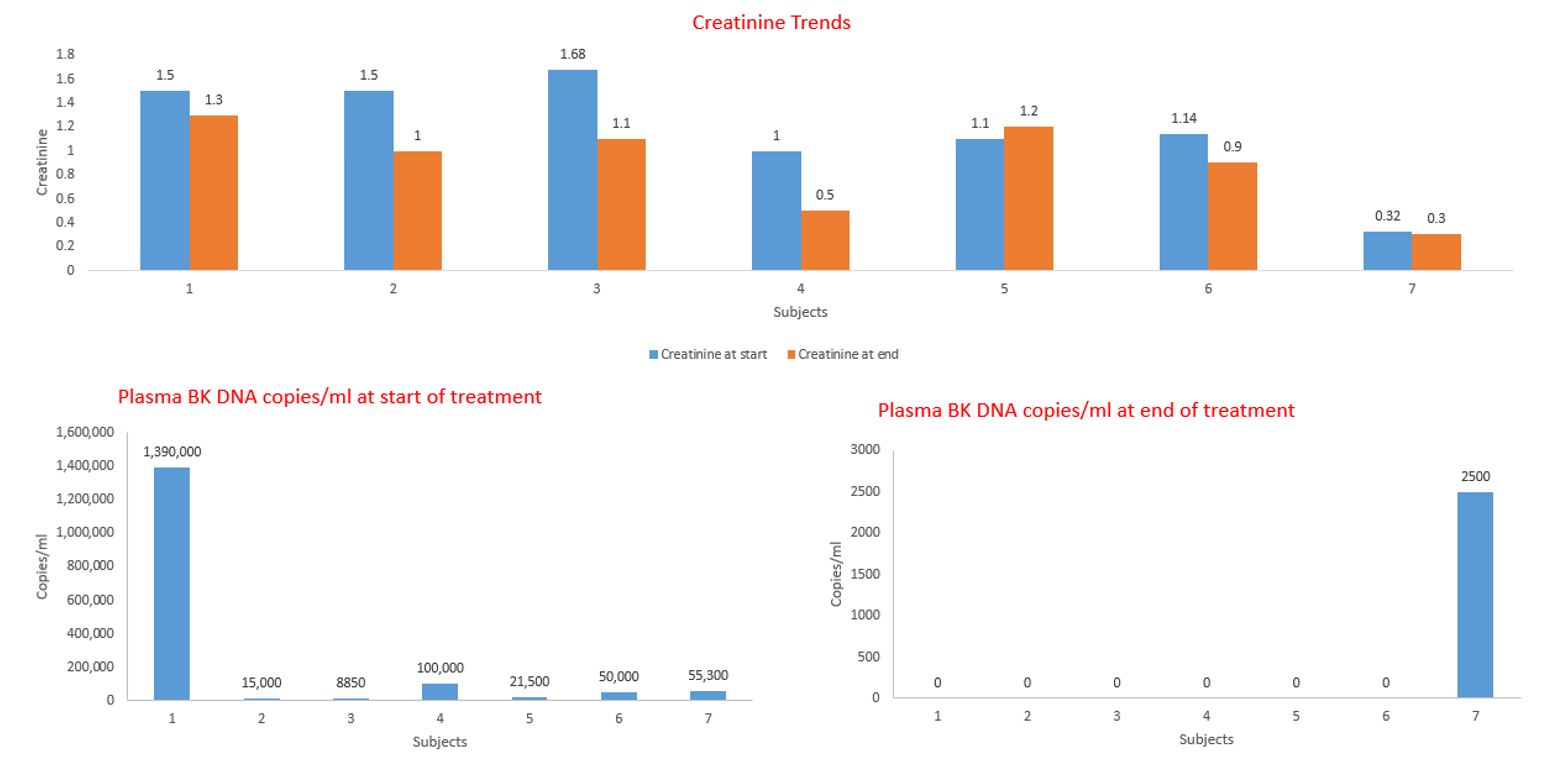Back
Nephrology: Transplant
Category: Abstract Submission
Nephrology II: Transplant
32 - Clinical Efficacy of 6 doses of monthly Intravenous Immunoglobulin for Polyomavirus BK -Associated Nephropathy (pBKVN) in Pediatric Kidney Transplant Recipients: Single Center Case Series.
Saturday, April 23, 2022
3:30 PM – 6:00 PM US MT
Poster Number: 32
Publication Number: 32.235
Publication Number: 32.235
Raja Dandamudi, Washington University in St. Louis School of Medicine, St. Louis, MO, United States; Ana Solis Zavala, St. Louis Children's Hospital, Saint Louis, MO, United States; Kevin T. Barton, Washington University in St Louis, Saint Louis, MO, United States; Stanley Paul Hmiel, Washington University in St. Louis School of Medicine, St. Louis, MO, United States; Vikas R. Dharnidharka, Washington University in St Louis, Creve Coeur, MO, United States
- RD
Raja Dandamudi, MD (he/him/his)
Assistant Professor
Washington University in St. Louis School of Medicine
St.Louis, Missouri, United States
Presenting Author(s)
Background: BKVN is a significant cause of allograft dysfunction and graft loss. Both initial reduction in immunosuppression and other therapies such as intravenous immunoglobulin (IVIg), cidofovir, leflunomide and fluoroquinolones have been tried, with varying degrees of success. At our center, we have used monthly IVIG for 6 months in those with high level DNAemia despite reduction of immunosuppression, with a high degree of success for 10 years.
Objective: We report here our single center collective series.
Design/Methods: In this retrospective analysis, we identified 7 pediatric kidney transplant recipients followed at our center, who developed pBKVN between 2010 and 2020.All received IVIg therapy for management of persistent BKV DNAemia > 10,000 copies/mL or nephropathy, after failure of reduction in immunosuppression.
Results: After 7.8±7.5 months (mean±SD) from the time of transplantation, 7 children (age at transplant range --) were diagnosed with pBKVAN. After failure of initial reduction of immunosuppressive therapy, patients received 0.5mg/kg IVIg monthly for 6 months. Prior to initiation of IVIg the mean urinary BKV DNA PCR BK virus was 3.18 million ± 6.82 million copies/mL (mean ±SD) and plasma load 234,379 ± 510,537 copies/ml. Upon diagnosis of pBKVAN, mean serum creatinine level peaked to 1.77 mg/dl (range 0.32-1.68) from initial baseline of 0.85 mg/dl (0.25-1.0), and after completion of therapy, mean serum creatinine had fallen to 0.92 mg/dl (0.3-1.3). After therapy, urinary BKV DNA load declined to 0.14 million±0.3 million copies/ml and plasma to 357 + 945 copies/ml in plasma. (Table1 & Figure 1). Six of the 7 patients reached successfully reached undetectable plasma loads by end of the therapy.Conclusion(s): In our case series, IVIg with antiviral and immunomodulatory properties seems to be an effective treatment for persistent pBKVN after failed reduction in immunosuppression. The efficacy of IVIg needs to be established in prospective, multi-center clinical trials.
Intravenous Immunoglobulin for Polyomavirus BK -Associated Nephropathy
Intravenous Immunoglobulin for Polyomavirus BK -Associated Nephropathy
Objective: We report here our single center collective series.
Design/Methods: In this retrospective analysis, we identified 7 pediatric kidney transplant recipients followed at our center, who developed pBKVN between 2010 and 2020.All received IVIg therapy for management of persistent BKV DNAemia > 10,000 copies/mL or nephropathy, after failure of reduction in immunosuppression.
Results: After 7.8±7.5 months (mean±SD) from the time of transplantation, 7 children (age at transplant range --) were diagnosed with pBKVAN. After failure of initial reduction of immunosuppressive therapy, patients received 0.5mg/kg IVIg monthly for 6 months. Prior to initiation of IVIg the mean urinary BKV DNA PCR BK virus was 3.18 million ± 6.82 million copies/mL (mean ±SD) and plasma load 234,379 ± 510,537 copies/ml. Upon diagnosis of pBKVAN, mean serum creatinine level peaked to 1.77 mg/dl (range 0.32-1.68) from initial baseline of 0.85 mg/dl (0.25-1.0), and after completion of therapy, mean serum creatinine had fallen to 0.92 mg/dl (0.3-1.3). After therapy, urinary BKV DNA load declined to 0.14 million±0.3 million copies/ml and plasma to 357 + 945 copies/ml in plasma. (Table1 & Figure 1). Six of the 7 patients reached successfully reached undetectable plasma loads by end of the therapy.Conclusion(s): In our case series, IVIg with antiviral and immunomodulatory properties seems to be an effective treatment for persistent pBKVN after failed reduction in immunosuppression. The efficacy of IVIg needs to be established in prospective, multi-center clinical trials.
Intravenous Immunoglobulin for Polyomavirus BK -Associated Nephropathy

Intravenous Immunoglobulin for Polyomavirus BK -Associated Nephropathy

